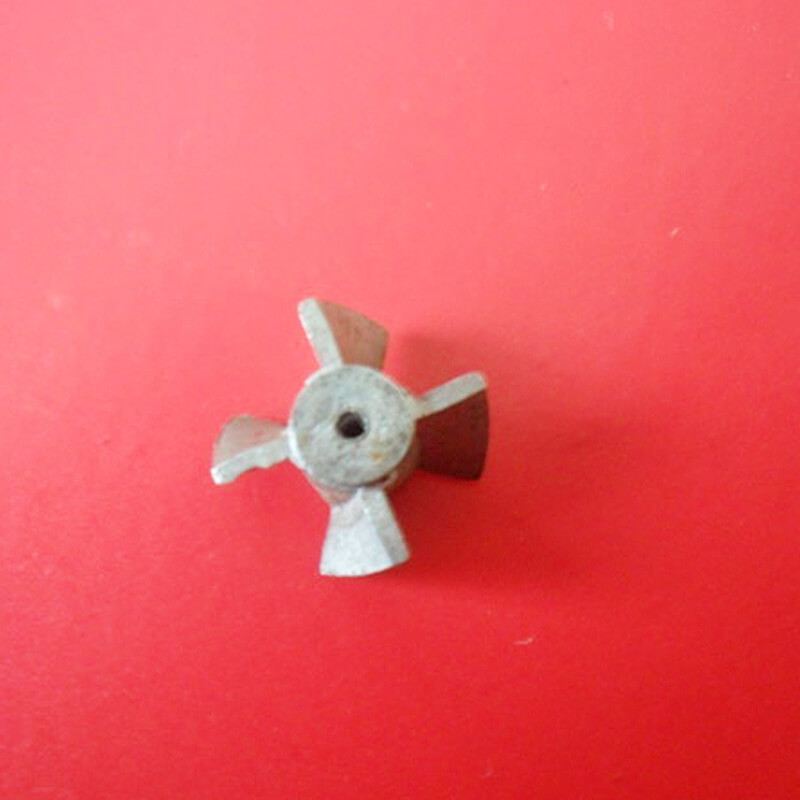The mechanical parts manufactured by powder metallurgy are also called sintered mechanical parts. Usually includes mechanical structural parts, oil-impregnated bearings and friction parts; narrowly refers to structural parts. The first sintered mechanical parts appeared were sintered metal oil-impregnated bearings. In 1910, the Swedish V.Lwendal obtained the patent for manufacturing modern sintered bronze oil-impregnated bearings. Later, American E.G. Gilson (E.G.Gilson) realized the industrial production of this kind of bearing. It officially established its status as an industrial product in 1930. In 1933, Germany began to develop sintered iron-based oil-impregnated bearings. In the late 1930s, the United States had mass produced and used sintered iron-based oil pump gears to replace cast iron products. Since the 1960s, due to the improvement of the quality of iron powder and the development of new powder varieties, the development of forming technology, forming equipment and sintering equipment, the performance of sintered mechanical parts has improved day by day, the shape has become increasingly complex, and the output has increased rapidly. In the past ten years, the average annual growth rate of sintering mechanical parts in industrially developed countries is about 10-15%. China began to produce copper-based oil-impregnated bearings in 1954, and iron-based oil-impregnated bearings in 1957. By the 1970s, sintered mechanical parts were already on a large scale in the production of agricultural machinery, automobiles, machine tools, instruments, textiles, and light industry. Wider application.

Material The main difference between sintered mechanical part materials and ordinary casting and forging materials is that the density of the former is a controllable variable; under the condition that the chemical composition and microstructure of the two are approximately the same, the mechanical properties of the former are a function of its density. Another important factor that affects its mechanical properties is alloying elements. The most commonly used alloying elements in iron-based sintered materials are carbon, copper, nickel, and molybdenum. Carbon can be used alone or in combination with other elements (especially copper). It is mainly used to improve the strength and hardness of iron-based sintered materials; the common feature of copper, nickel, and molybdenum is that the affinity for oxygen is smaller than that of iron, so those containing these elements The alloy powder body can be sintered in the atmosphere of general sintering of pure iron.
In the production of sintered iron-based materials, copper is the most widely used alloying element. Copper is melted during sintering and can be dissolved in iron to form an alloy with iron, thereby greatly improving the strength of sintered iron-based materials. If copper and carbon or nickel are used as alloying elements at the same time, the mechanical properties of sintered iron-based materials can be further improved. The main purpose of adding molybdenum to sintered iron-based materials is to increase hardenability. Molybdenum has a good effect on the mechanical properties of sintered materials in the sintered state. Therefore, alloy series such as sintered iron, sintered carbon steel, sintered copper steel, sintered molybdenum steel, sintered nickel molybdenum steel and sintered stainless steel have gradually formed. In the 1970s, iron phosphorus powder was added to iron powder to form a sintered iron phosphorus carbon alloy. In terms of sintering non-ferrous metal alloys, sintered bronze, sintered brass, and sintered aluminum alloy have been developed.
The density of the Custom Pulley Powder Metal parts, the size, shape and distribution of the pores, and the degree of sintering have a significant impact on the mechanical properties of the sintered mechanical parts (see powder metallurgy sintering). Depending on the density of the material, the tensile strength of sintered carbon steel is 11-42kgf/mm, which can be increased to over 63kgf/mm after heat treatment. The tensile strength of sintered copper steel is 14~57kgf/mm, and it can reach more than 70kgf/mm after heat treatment. The tensile strength of sintered brass is 28kgf/mm. Generally, the tensile strength of sintered aluminum alloy is 10~35kgf/mm. Sintered materials have low ductility and impact toughness due to the presence of residual porosity (typically 5-25%). Although the pore morphology and quantity are changed through repressing, re-sintering, infiltration, and subsequent heat treatment, the mechanical properties, especially fatigue strength, impact toughness, and ductility can be improved, but the corresponding properties of cast and forged materials are still not achieved. Therefore, the application range of sintered mechanical parts is limited. However, the use of sintering method to produce mechanical parts, compared with parts produced by casting, forging, and machining methods, has the advantages of energy saving, fewer processing procedures, high material utilization, uniform dimensional accuracy, and suitable for mass automated production. , The scope of application has been expanding.
Powder sintering forging The combination of powder metallurgy forming and forging is an important development in the manufacturing process of sintered mechanical parts. The process is to first use powder metallurgy to make metal powder into preforms, and then forging and other processes to make parts, so that the porosity of the sintered material can be reduced to less than 2%, and the physical and mechanical properties are improved to close to the corresponding The level of casting and forging materials has expanded the application range of sintered mechanical parts.

 English
English 简体中文
简体中文






